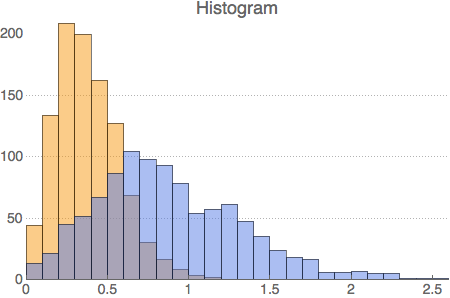
Wolfram Knowledgebase Curated computable knowledge powering Wolfram|Alpha. Wolfram Universal Deployment System Instant deployment across cloud, desktop, mobile, and more. rules Edit To colour individual points in a ListPlot3D you can use VertexColors, for example ListPlot3D points, VertexColors -> labels /. You can modify labels for different labels. It works by turning each line into a self-labelling button. After labelling, the plot without dynamic content can be found set to plainplot. This approach requires to analyse each plot case by case and playing around to find a solution, but I am afraid there is nothing one can do to partially automate it.Īlso, I am not sure that I am doing this the best way, or whether the result could look better/more professional.Wolfram Data Framework Semantic framework for real-world data. Then the points can be plotted in the colour corresponding to their label as follows ListPointPlot3D Pick points, labels, & / Union labels, PlotStyle -> Union labels /. You can label the lines as you like using this method, based on my earlier post here. Asking for help, clarification, or responding to other answers.

It can also create LaTeX independent EPS and. Thanks for contributing an answer to Mathematica Stack Exchange Please be sure to answer the question.Provide details and share your research But avoid. » PlotLabel->StandardForm expr will give a label in standard Wolfram Language form. Arbitrary strings of text can be given as ' text '. It will be given by default in TraditionalForm. PlotLabel-> label specifies a label to give. It thus facilitates the creation of publication-quality Enscapulated PostScript (EPS) graphics. PlotLabel->None specifies that no label should be given.
#MATHEMATICA PLOT LABEL CODE#
For instance, if you run this code in Mathematica, one of the squares will have a value of 23, and Id like that value overlaid on that square, and then the same for all the other non-zero values (I dont need a bunch of 0s). MathPSfrag is a Mathematica package providing a graphics export function that automatically replaces Mathematica expressions in a graphic by the corresponding LaTeX constructs and positions them correctly. Using slelievre answer (and imitating the PlotLabels idea, putting gray lines between plot and label), I came up with this: text_options = $'.format(float(nexp)), What I want is for the value of each square to be displayed over it always (i.e. P += plot_semilogx(f(x,c), (x, xMinPlot, 10), hue=i/lenght) The following example gives an idea of the 'most overlapping' case I can be interested in (actually an exaggeration, a real plot would stop at nexp=2.5): f(x,n) = e^(-1/(n*x))

Since the different curves never cross in a given plot, just attaching the legend label to the curve tail would be great: how can I achieve this? To be clear, I am looking for an equivalent of Mathematica PlotLabels. I am using a legend, but it goes in a separate box and does not really help a lot.

The plot should be grayscale friendly (I am giving curves different shades, but it is not enough), and line style (dotted.) already has a different meaning.

#MATHEMATICA PLOT LABEL SERIES#
If you add or delete a data series from the axes, the legend updates accordingly. I have a plot with several curves (say, 5) and I need to clearly mark them. IMSL (FORTRAN code DZPOCC) and Mathematica (NSolve). In the mathematical discipline of graph theory, a graph labelling is the assignment of labels, traditionally represented by integers, to edges and/or.


 0 kommentar(er)
0 kommentar(er)
